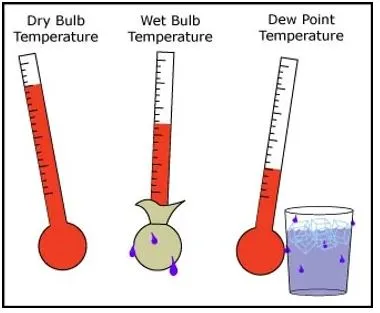

28th May 2024 (11 Topics)
Context
North India is experiencing a severe heatwave along with high temperatures and humidity. This has also brought the wet bulb temperature concept into mainstream conversation.
Measuring Humidity
- Humidity levels are often determined using three main temperature readings:
- Dry bulb
- Wet bulb
- Dew point
- The Wet bulb temperature, in particular, plays a crucial role in understanding humidity levels.
- It is the lowest temperature that can be achieved by evaporating water into the air at constant pressure.
- This temperature is measured by covering a thermometer bulb with a wet cloth, allowing the water to evaporate and cool the thermometer, thus indicating the Wet bulb temperature.
- This information is vital for various sectors, including comfort assessment, agriculture, and weather prediction.
- In simpler terms, wet bulb temperature tells at what level human bodies will be unable to cool themselves down by sweating. In this case, the threat of a heat stroke rises dramatically.
- Wet bulb temperature combines heat and humidity to indicate how much evaporation can be absorbed into the air.
- It measures the lowest temperatures that our bodies can reach when we are in hotter environments, by sweating.
Dry bulb and Wet bulb temperatures
- The difference between the Dry bulb and Wet bulb temperatures depends on humidity levels.
- Higher humidity results in less evaporation and a smaller temperature difference.
- When the air is fully saturated (100% humidity), the Wet bulb and Dry bulb temperatures are identical.
Fact Box: About Dew Point
|




